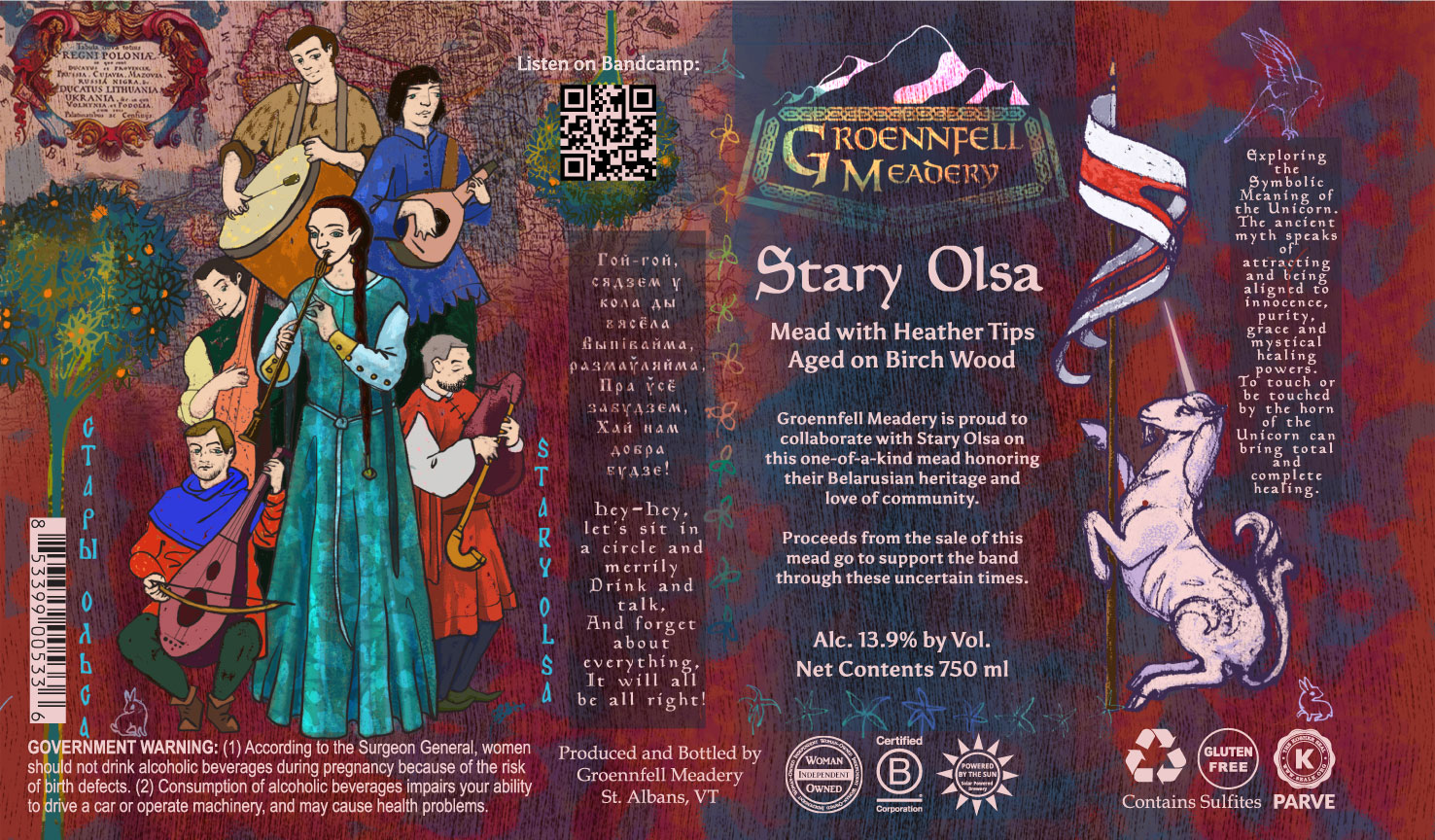
– On our first US tour, we played a show at the Groennfell Meadery in Vermont state. We were invited by the director of the Vermont Renaissance Faire (who was a backer of the Medieval Classic Rock project on Kickstarter in 2016) to appear at the festival, but our tour was too late to perform there. So we set up a show at the Meadery instead, and had a great time! It was one of unusual events ever. Here's a video from that 2016 show, as we played in the shipping department, surrounded by towers of mead cans!
– The folks at Groennfell have been making a special collection of Historic Recipe meads for some time, and they invited us to become a part of it! Together we developed a new Stary Olsa Mead. It even comes with a link to a special playlist, which will have fun drinking songs for extra merriment! – says Jeanine Renne, manager of the band in the US.
«We're thrilled to be able to do our small part to help out this fantastic group», – says Ricky Klein, the head brewer and co-founder of Ggoennfell. – «We proudly invite you to check it out the first!"
– It is made from wildflower honey with heather flowers and aged on birch wood. The result is an author's recipe based on traditions of making mead in Belarus. Ancient music together with ancient drink is your time machine to the past. We can't wait to taste it! – says the flutist of the band Maria.
The drink is available for ordering on the meadery website. Delivery is carried out on the United States territory.

"Groennfell Meadery is proud to collaborate with Stary Olsa on this one-of-a-kind mead honoring their Belarusian heritage and love of community. Proceeds from the sale of Stary Olsa Mead go to support the band through these uncertain times."– says the label.
The beautiful label was designed by young artist Trifon Markov from Portland, who hosted a concert in his art gallery on the 3rd US tour of Stary Olsa.
The culture of brewing mead in Belarus is very ancient. When there was no wine or vodka, honey was the most welcome and sacred drink for our ancestors. Its production technology is very similar to beer brewing - most traditional recipes contain hops. By the middle of the XIX c. many preindustrial breweries were also mead breweries. And after the emergence of a new brewing industry, which switched to bottom-fermented beer, and the spread of vodka, mead breweries turned out to be on the outskirts of history, and until the beginning of the XX c. most of them were closed.
The technology is quite simple, but it takes a lot of time. Honey is mixed with boiled water, yeast, hops and stored in a cool place. Mead before and today are completely different products. However, real mead had to age for a long time in wooden barrels or glass jars from several months to several years. Depends on the level of technological culture. But also from the accepted rhythm of life in society. Depending on the proportion of honey, water and the degree of distillation, mead had an alcohol strength of 12 to 50 degrees. According to the supplements, it was subdivided into fruit (berry), herbal, and root.
During the Grand Duchy of Lithuania times mead was the most popular in forest-rich counties, where such a craft as beekeeping was developing. Grodno district with its forests was one of the centers of honey trade and production of mead in the Grand Duchy of Lithuania. Before the holiday, artisans always made their mead. And the wax left over from the honey was given to a church. The drink was beloved both among the aristocracy, the townspeople and peasants in the XVI-XVIII c.
– If it is popular, they might add it to their regular brew schedule... but the plan was to offer it as part of their one-time special collection. So, this might be your only chance to get a bottle. There will be more information and photos, both at our website and social media, and at the Meadery's, but we wanted you to have first crack at it. We love our fans, and even though it's impossible to tour or training, right now, we can all share a drink together! Thank you, friends!
In Belarus, unlike Poland, Ukraine and Lithuania, where the tradition of making mead has been preserved, there are few mead brotherhoods of enthusiasts. Perhaps this event will push people to revival and spread of the traditional ancient drink in Belarus.









